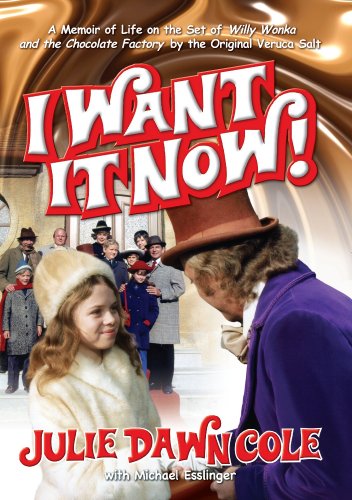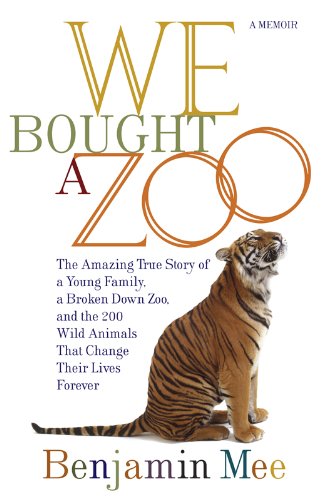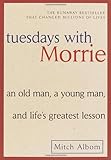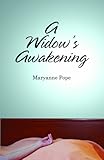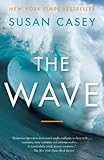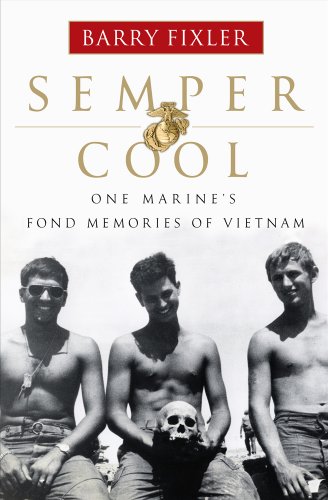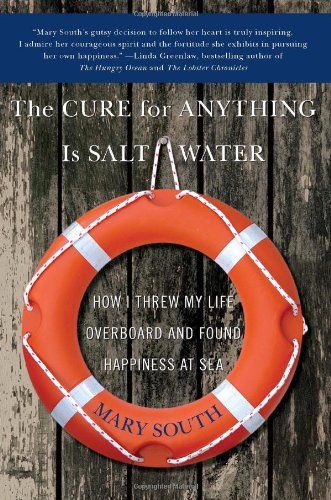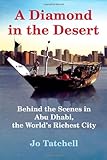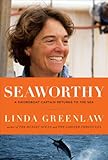I Want it Now! A Memoir of Life on the Set of Willy Wonka and the Chocolate Factory
Julie Dawn Cole, with Michael Essinger
Description (from Amazon.com): In 1970, Julie Dawn Cole was cast as the unforgettable Veruca Salt in the classic motion picture Willy Wonka and the Chocolate Factory with Gene Wilder. Since its release in 1971, this epic musical has endured as a favorite of children from around the world with a fan base that encompasses generations of movie goers. With its unforgettable characters, chocolaty landscapes and everlasting music, this charming fairy-tale mixes these ingredients into what has been become a cinematic classic from literary legend Roald Dahl. Praised by critics worldwide and often featured in broadcasts with other masterpiece musicals, it remains a timeless treasure. Acclaimed film critic Robert Ebert wrote: “Willy Wonka and the Chocolate Factory is probably the best film of its sort since The Wizard of Oz. It is everything that family movies usually claim to be, but aren’t: Delightful, funny, scary, exciting, and, most of all, a genuine work of imagination.” Julie Dawn Cole has written an enchanting and richly illustrated memoir that offers a rare look behind the stage curtain to this ageless film. Splendidly illustrated with personal letters, never-seen-before photographs and documents; her mesmerizing story chronicles the entire production experience and tells of the remarkable journey of how she became known worldwide as a really bad egg. Filled with countless funny and touching memories, her story takes readers behind-the-scenes of Willy Wonka and the resulting coming of age journey that brought the cast together again after nearly a quarter century. I Want it Now takes readers beyond the world of pure imagination and behind the scenes to this universally cherished motion picture. A true-to-life Charlie Bucket tale, Julie’s story is unforgettable…
Review: I was born in the same year that Willy Wonky and the Chocolate Factory was being filmed, so I’ve never known life without Gene Wilder and the cast of kids singing and dancing their way through the chocolate factory. Like many little girls, demanding, impetuous Veruca Salt was my favorite character. She may have wanted it now, but I wanted to be her.
When Julie Dawn Cole’s memoir of life on the set showed up as a Kindle book for under $3, I had to have it. I mean, I enjoy memoirs in general, but this book spoke to the child in me as well as the adult. I enjoyed her memories of the set, the filming, the other kids. Her real life wasn’t so great when she was young, and while none of the kids made a fortune on the film, her income helped keep her mother and sister safe and healthy.
This memoir isn’t terribly profound, or incredibly important (except, maybe, to Ms. Cole herself), but it’s an interesting, candid account of a marvelous adventure with enough of “what happened after” to make it feel complete. Ms. Cole is still a working actor, while the other kids who were part of the film left the business (the boy who played Charlie grew up to become a veterinarian – how cool is that?), so technically, I guess that’s a happy ending.
Great read, especially if you’re a fan of the film.
I Want it Now! A Memoir of Life on the Set of Willy Wonka and the Chocolate Factory
Julie Dawn Cole, with Michael Essinger
BearManor Media, February 2011
252 pages
Buy from Amazon.com >>

